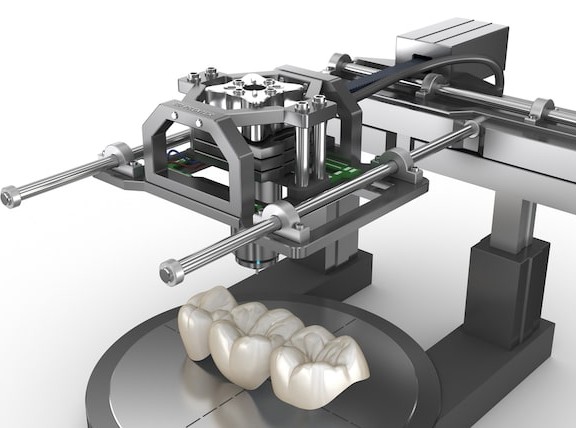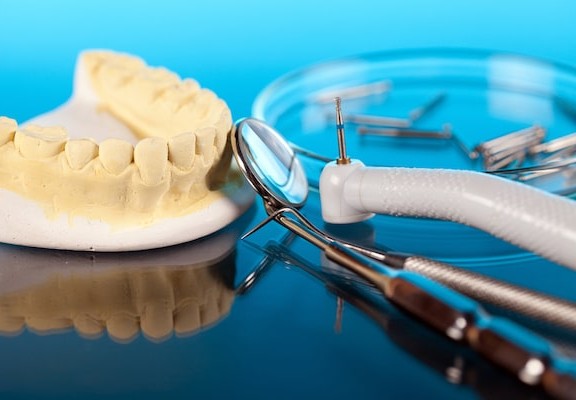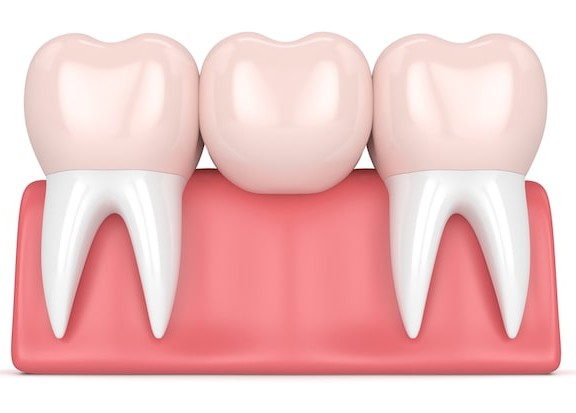 A dental bridge can “bridge” a gap between missing teeth by utilizing healthy teeth on each side of the missing tooth as an abutment or anchor for the pontic (false tooth) which will be in the middle. In some cases, there may not be any adjacent healthy teeth to support the pontic. Therefore, dental implants may be needed to serve as an abutment for the dental bridge. While dental bridges can restore oral functions, prevent the teeth from shifting out of place and maintain bone structure, there are also some risks associated with them:
A dental bridge can “bridge” a gap between missing teeth by utilizing healthy teeth on each side of the missing tooth as an abutment or anchor for the pontic (false tooth) which will be in the middle. In some cases, there may not be any adjacent healthy teeth to support the pontic. Therefore, dental implants may be needed to serve as an abutment for the dental bridge. While dental bridges can restore oral functions, prevent the teeth from shifting out of place and maintain bone structure, there are also some risks associated with them:
Destruction of Healthy Teeth
Before the dentist can place a dental bridge, there is some prep work which needs to be done to the abutment teeth. The amount of prep work that is needed depends on the type of dental bridge being used. The dentist will prepare these healthy teeth by reshaping and resizing them to accommodate the crowns which hold the pontic in place. This means that the natural teeth will need to be shaved down to a stub which makes them prone to sensitivity and decay. Once the tooth has been prepped for a crown, it is permanently altered and not likely to survive on its own. Therefore, the tooth would always need a crown and/or bridge. Furthermore, during the reshaping of the natural tooth, the pulp or nerve is traumatized and can become damaged to the point of death. If the pulp of the tooth dies, the tooth also dies. Consequently, a dead tooth may not be strong enough to support the bridge and the restoration could collapse.
Gaps between the Gums and Bridge
If the dentist does not craft the pontic to fit sufficiently, a gap is left between the gums and artificial tooth. This means that food can get trapped in this area and can lead to risks such as inflammation and secondary caries or decay of the tooth under the crown. Even a properly crafted bridge can eventually have gaps due to gum recession. Improperly fitted bridges can also lead to structural stress or malocclusion.
Cracks and Chips
Dental bridges are not permanent and can crack, break or chip much like the natural teeth. Dental bridges can also warp and result in chewing difficulties, hindered speech and discomfort. Patients who grind or clinch their teeth at night may wear down their teeth quicker while causing breaks, fractures or bridge instability. A fracture in the pontic can open the gum line and cause pain and infection. Small fractures might be able to be repaired but larger fractures may necessitate a whole new bridge. Therefore, it is not recommended to chew hard foods such as nuts and ice in order to maintain the integrity of the bridge.
Gum Disease
Another risk associated with dental bridges includes injury to the gums and/or a higher risk for gum disease. If the gums become diseased, including the tissue surrounding and supporting the teeth, a loss of tooth may occur. Therefore, it is imperative that the patient maintain proper oral care with dental bridges to avoid gum disease. Patients who already suffer from gingivitis are usually not good candidates for a dental bridge since it can cause the disease to intensify. This can lead to the abutment teeth supporting the bridge becoming loose and falling out.
SP






